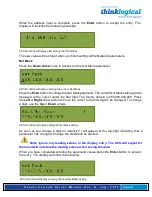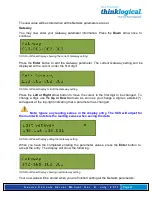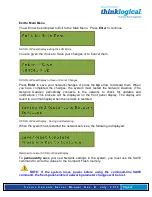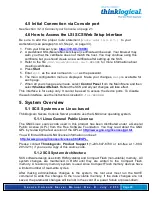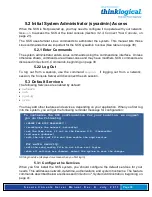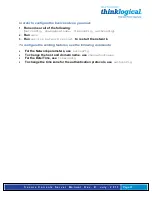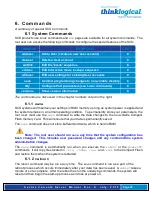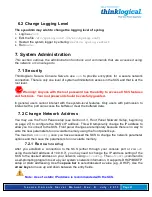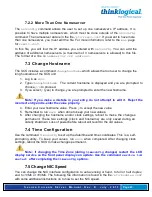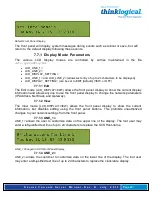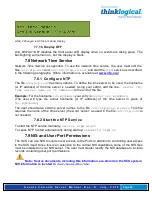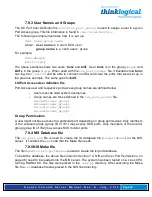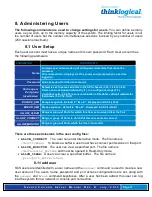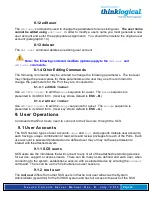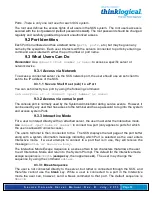
S e c u r e C o n s o l e S e r v e r M a n u a l , R e v . K , J u l y , 2 0 1 3
Page 38
6 . C o m m a n d s
A summary of special SCS Commands
6.1 System Commands
SCS products use Linux commands and
man
pages are available for all system commands. The
root user can access the following commands to configure the special features of the SCS:
COMMAND
PURPOSE
CHPT.
adduser
Add a User (creates a new user account)
8
deluser
Delete a User account
8
editbrk
Edit the 'break' sequence
8
editesc
Edit Interactive mode 'escape' sequence
8
edituser
Edit user settings for existing User accounts
8
save
Commit programming changes to non-volatile memory
6
stty
Configure Port parameters (see Linux commands)
6
versions
Show version information
6
The commands are discussed in the chapter numbers noted on the right.
6.1.1
save
SCS systems will maintain your settings in RAM memory as long as system power is applied and
the system remains in a normal operating condition. To permanently store your parameters, the
root user must use the
save
command to write the data changes to the non-volatile Compact
Flash memory card. This will ensure that your data is permanently saved.
The
save
command does not store buffered port data, which is held in RAM.
!
Note: The root user should run
save
any time that the system configuration has
been changed. This includes user password changes and any command-line system
administration changes
The
save
command is automatically run when you execute the
reboot
or the
poweroff
commands. It will copy files located in
/etc, /home, /usr
and
/root
to the Compact Flash
and restore them when the system is restarted.
6.1.2
reboot
The
reboot
command may be run at any time. The
save
command is run as a part of the
reboot process which occurs immediately after your data has been saved. A
reboot
takes a
minute or so to complete. After the reboot has run the underlying commands, the system will
reset and then begin the start-up process as it does at power on.







